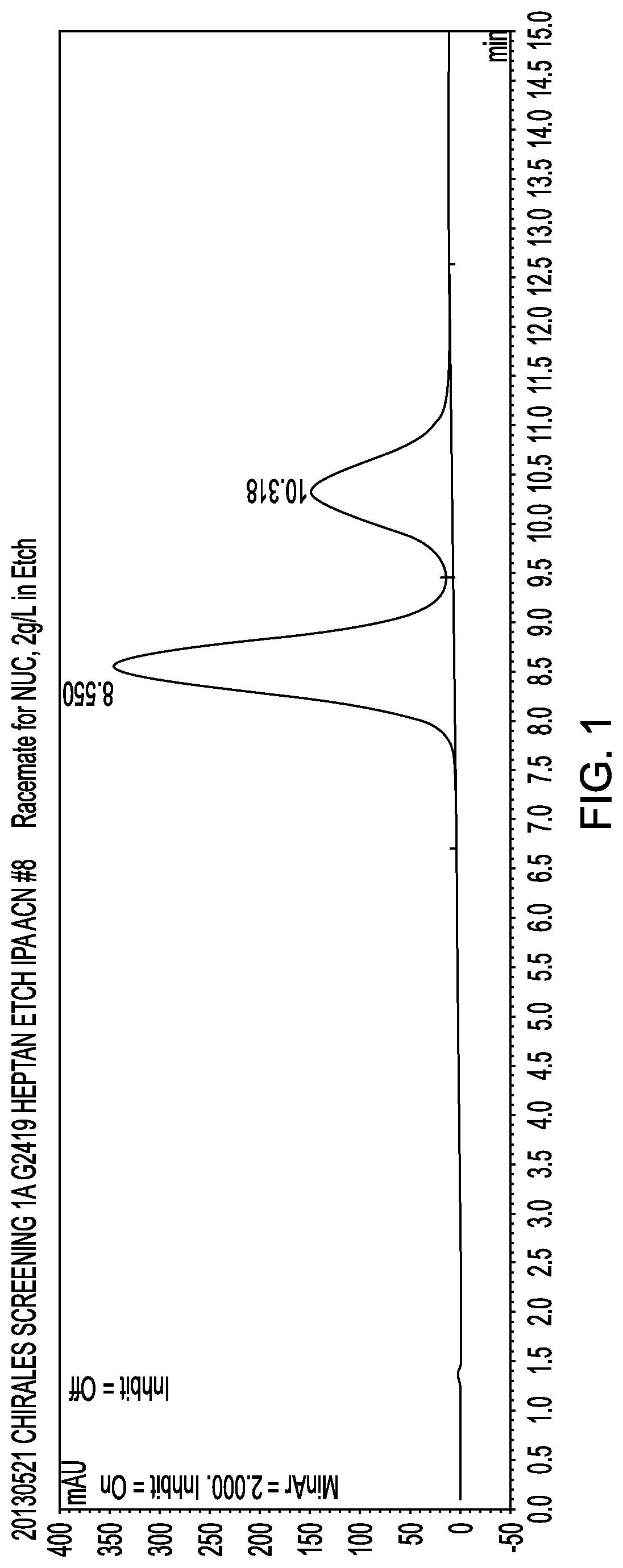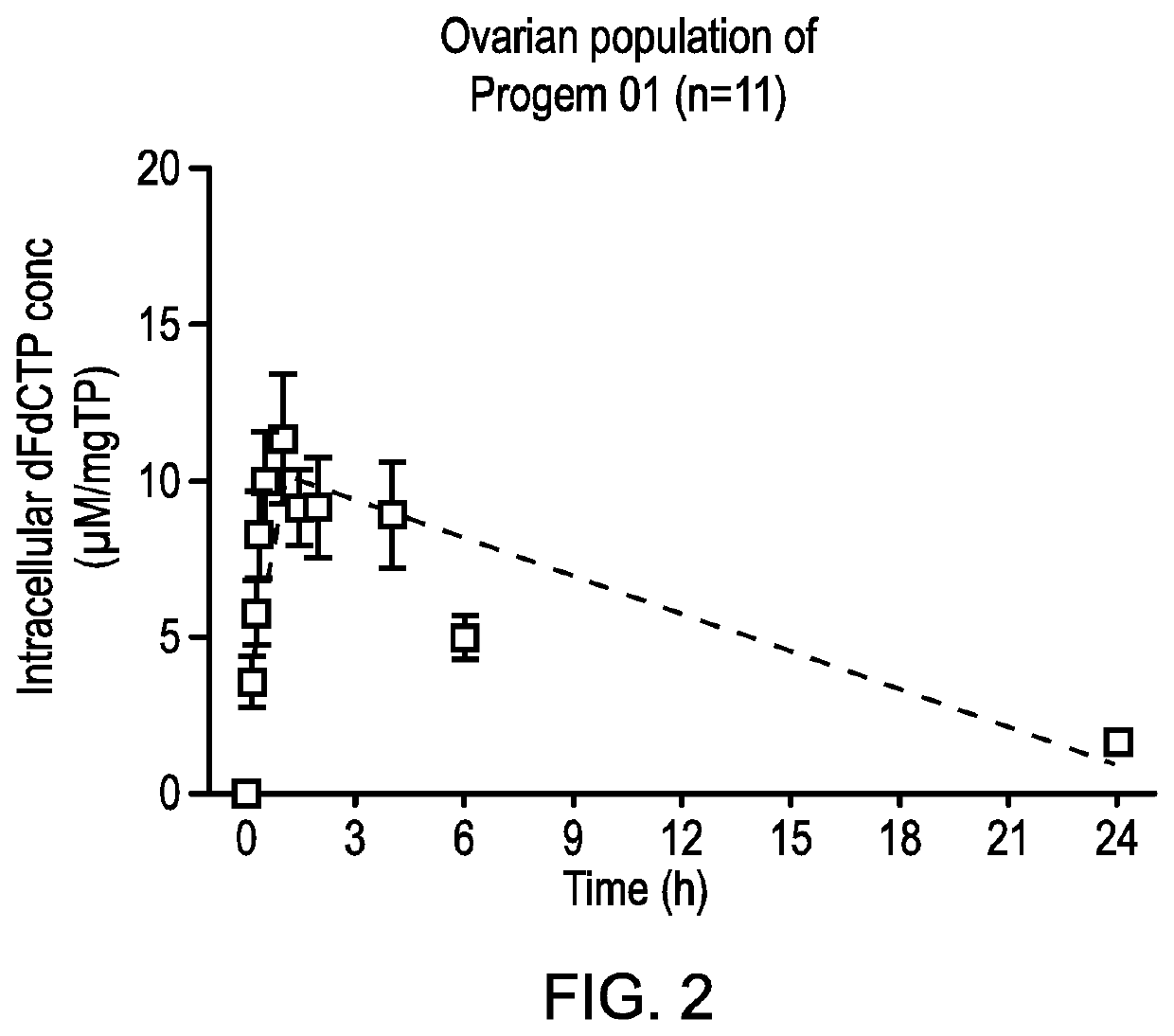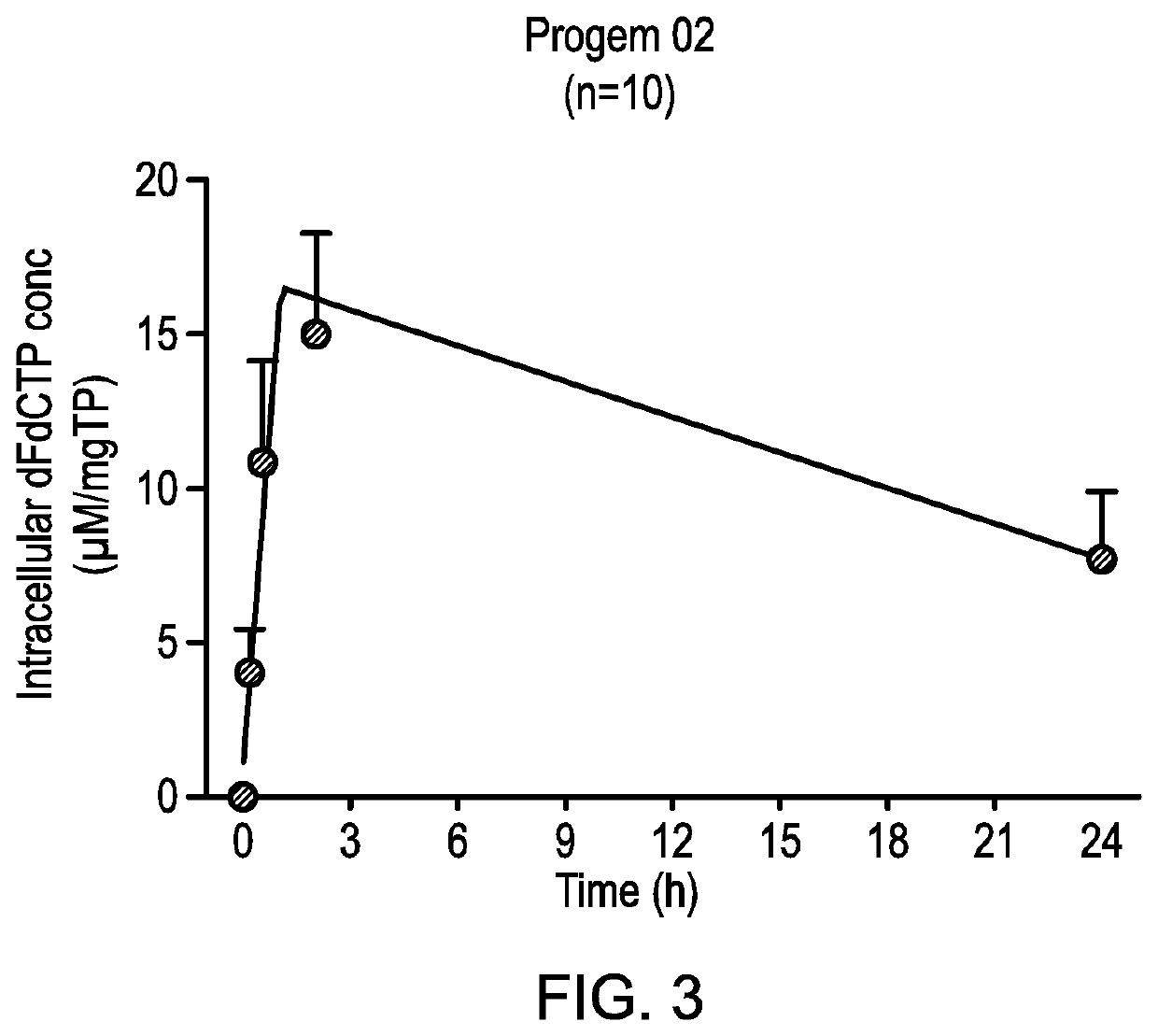Combination therapy for cancer
a cancer and cancer technology, applied in the field of cancer combined therapy, can solve the problems of poor overall prognosis, limited clinical utility of gemcitabine, and inferior response to carboplatin alone in partially platinum resistant recurrence, and achieve the effects of improving pharmacokinetic results, improving clinical outcomes, and high levels of the active metabolite dfdctp
- Summary
- Abstract
- Description
- Claims
- Application Information
AI Technical Summary
Benefits of technology
Problems solved by technology
Method used
Image
Examples
example 1
astereoisomers of NUC-1031
[0172]The (R) and (S) isomers can be separated by HPLC under the following conditions:
Equipment: Agilent 1200™ series with DAD detector
Flow rate: 1.0 mL / min
Column: Chiralpak AD™; 250×4.6 mm ID (normal phase)
Temperature: ambient
Particle size: 20 μm
Feed: dissolved in MeOH; 10 g / L
Solvent: n-heptane / IPA 10->50% isopropyl alcohol
The chromatogram is shown in FIG. 1. The (S)-epimer eluted at 8.6 min and the (R)-epimer eluted at 10.3 minutes.
[0173]Characterisation Methods and Materials:
[0174]Proton (1H), carbon (13C), phosphorus (31P) and fluorine (19F) NMR spectra were recorded on a Bruker Avance 500 spectrometer at 25° C. Spectra were auto-calibrated to the deuterated solvent peak and all 13C NMR and 31P NMR were proton-decoupled. The purity of final compounds was verified to be >95% by HPLC analysis using Varian Polaris C18-A (10 μM) as an analytic column with a gradient elution of H2O / MeOH from 100 / 0 to 0 / 100 in 35 min. The HPLC analysis was conducted by Varian...
example 2
Study of Combination of NUC-1031 and Carboplatin in Patients with Recurrent Ovarian Cancer
[0187]A Phase IB open label, dose-escalation study, PRO-002, was conducted to assess the safety, pharmacokinetics and clinical activity of NUC-1031 given on days 1 & 8 with carboplatin on day 1, q3-weekly for 6 cycles in participants with recurrent ovarian cancer.
[0188]
TABLE 1Demographic summary of the patients treated in the studyPatients10Evaluable Patients (completed 3 cycles)10Age (mean)62 (range 37-77)Prior Chemo Regimens (mean)3.1 (range 2-6)
[0189]
TABLE 2summary of treatment efficacyComplete Response10% (n = 1)Partial Response10% (n = 1)Stable Disease80% (n = 8)Disease Control Rate100% (n = 10)Progression free survival (PFS)5.4+ months
[0190]
TABLE 3Summary of patient responsesNUC-PrimaryPriorPriorPFI1031Best RECISTCA 125PFSPtAgeDiagnosisChemoGemMonthsCyclesResponseBaselineLowestReductionGCIGMonths00154Grade 3, Stage2N76Partial2182788%PR9+Response3bAll targetlesions gone00268Grade 3, Stag...
example 3
inetic Analysis of dFdCTP Concentrations from the PRO-002 Clinical Study (NUC-1031 in Combination with Carboplatin) and Comparison with Results from the ProGem1 Clinical Study (NUC-1031 Alone)
Materials and Methods
1. Materials
[0196]dFdCTP reference compound was obtained from Biorbyt, UK. Lymphoprep from STEMCELL Technologies Inc., UK. Perchloric acid (PCA), ammonium acetate (NH4Ac) and ammonia were all obtained from Sigma Aldrich, UK. LC-MS grade Water, methanol, acetonitrile and formic acid were all obtained from Fisher Scientific, UK.
2. Methods
[0197]A. Blood Collection and PBMCs Preparation:
[0198]6 ml of blood was collected using heparinised blood collection tubes. After centrifugation and separation of plasma, buffycoat was collected and transferred to new test tube containing 3 ml of Lymphoprep density gradient. After centrifugation, the upper interface containing the PBMC layer was transferred to new test tube. After washing with phosphate buffered saline (PBS), PBMCs were re-su...
PUM
 Login to View More
Login to View More Abstract
Description
Claims
Application Information
 Login to View More
Login to View More - R&D
- Intellectual Property
- Life Sciences
- Materials
- Tech Scout
- Unparalleled Data Quality
- Higher Quality Content
- 60% Fewer Hallucinations
Browse by: Latest US Patents, China's latest patents, Technical Efficacy Thesaurus, Application Domain, Technology Topic, Popular Technical Reports.
© 2025 PatSnap. All rights reserved.Legal|Privacy policy|Modern Slavery Act Transparency Statement|Sitemap|About US| Contact US: help@patsnap.com



